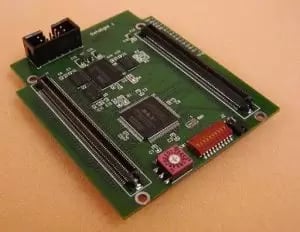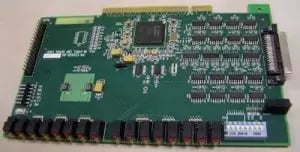Embedded Systems Design Using FPGA
According to Intel, in the next 10 years, the healthcare market will focus on early diagnosis, digitized patient information that can be accessed from numerous locations, and “total solution” selling that contributes to healthcare productivity gains – all with the help of FPGA enabled medical equipment.


FPGA in a Nutshell
FPGA stands for field-programmable gate array. FPGA is essentially a hardware circuit that can be programmed by users to accomplish one or more logical operations. FPGAs are integrated circuits, or ICs, which are basically a set of circuits on a chip also known as the “array” part. These circuits, or arrays, consist of configurable logic blocks (CLBs), memory, or other elements.
For comparison, ASIC (Application-Specific Integrated Circuit) can only do its specific function task and does not permit reprogramming or modification whereas in FPGA the circuit is made by connecting a number of reprogrammable blocks.
ASIC chip technology is typically used in electronic devices such as laptops, smartphones, and TVs while FPGA cover a more versatile range of areas—from equipment for video and imaging, to circuitry for computer, auto, aerospace, and military applications, in addition to electronics for specialized processing and more.
Embedded systems design with FPGA
Low End FPGAs
Designed for low power consumption, low logic density and low complexity per chip. Examples include Spartan family from Xilinx, Cyclone family from Altera, Mach XO/ICE40 from Lattice semiconductor, and fusion family from Microsemi.
Mid-Range FPGAs
Designed for optimum solution between the low-end and high-end FPGAs, balancing performance and the cost. Examples include Arria from Altera, IGL002 from Microsemi, Artix-7/Kintex-7 series from Xlinix, and ECP3 and ECP5 series from Lattice semiconductor.
High End FPGAs
Designed for logic density and high performance. Examples include Virtex family from Xilinx, Speedster 22i family from Achronix, Stratix family from Altera, and ProASIC3 family from Microsemi.
Current Applications
FPGA boasts rapid growth over the past decade due to their wide range of applications. For example, it has become major subject of research and utilization in the field of biomedical engineering like wireless body sensor network, diagnostic imaging, electromedical segments, cardiac management, genomics/life science, hardware acceleration, architectures, and more.
Other specific application of an FPGA includes ASIC prototyping, digital signal processing, device controllers, software-defined radio, computer hardware emulation, random logic, integrating multiple SPLDs, cryptography, filtering, voice recognition, and communication encoding and many more.
What’s in it for product designers and manufacturers?
Embedded systems with FPGA are on the rise, offering a flexible, low-risk path to successful system design—boasting optimum cost efficiencies along with value-added capabilities and long-life cycles for diverse applications as noted above. The market potential is huge, making it a suitable avenue to offer products to various industries for product designers and manufacturers. Learn more about embedded systems and FPGA.
End Note
Service providers like Voler Systems with FPGA design expertise are vital for businesses looking to develop or manufacture FPGA designs for the devices and solutions covered in this topic. Voler helps product designers build FPGA-based electronic products for medical devices, image and video processing, high-speed memory interfaces. System integration, architecture development, design optimization, and coding in VHDL, Verilog, and other tools.
